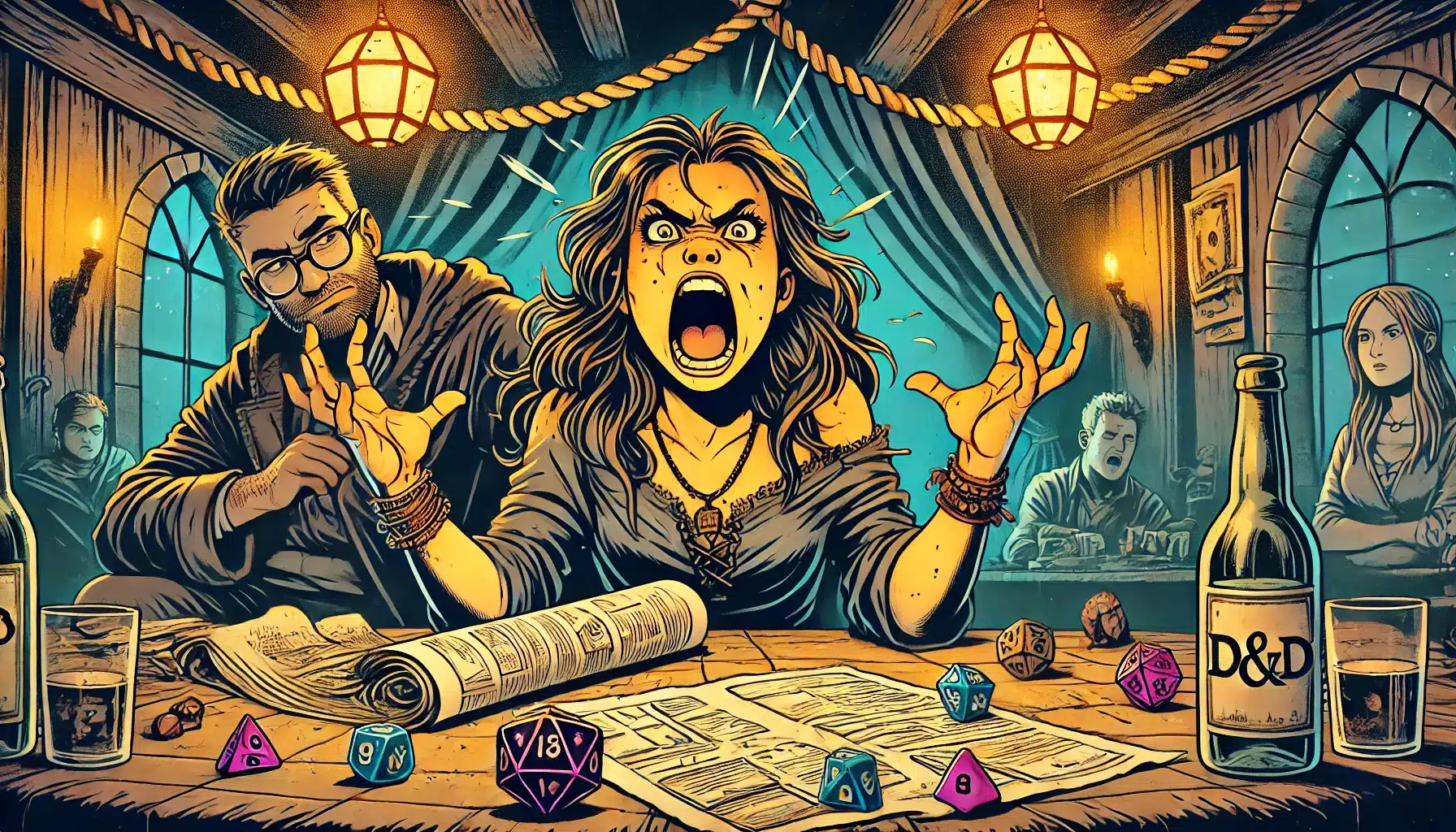In a sweeping move likely to set tongues wagging across the realms of tabletop gaming, the One D&D 2024 Player’s Handbook has introduced a controversial change that is dividing players worldwide. The new edition mandates that all subclass progressions for every class begin at the 3rd level, a notable pivot from previous iterations. This modification is part of a broader effort to unify gameplay mechanics, but, as you might expect, not everyone is on board. Many players are seeing red over what they consider a disruption of cherished traditions.
Imagine this: in older editions of D&D, certain classes like Clerics and Warlocks allowed players to choose their subclass right from the get-go at 1st level. That was a key feature, a promise that your character would immediately start taking shape. Now, however, the architects of D&D seek to create a more streamlined, standardized system. The intent is to ensure a smoother trajectory for narrative development and game balance. But here’s the thing: it hasn’t gone down well with everyone.
For the game’s longtime devotees, this change seems like a bitter pill to swallow. Players who have poured years into cultivating their in-game identities feel like their beloved characters are now templates waiting too long to truly blossom. The uproar is sharp and loud, spilling over from game tables to online forums, where the conversation is becoming as heated as a dragon’s breath.
So, what’s the rationale behind all this? The D&D design team suggests this move is about consistency, allowing players to get a taste of their character’s potential before committing to a subclass. They argue it’s a chance to better understand gameplay mechanics and role-playing opportunities, but many players remain unconvinced.
And yet, amid the discord, a debate of monumental proportions looms: Is the future of D&D about preserving its storied past, or is it about ushering in a reliable, albeit less customizable, mechanic to guide players of varying experiences? It’s a question that now hangs in the air like a specter over taverns, digital or otherwise.
- The Shift to Universal 3rd-Level Subclass Progression
- Player Backlash: Tradition vs. Standardization
- Impact on Legacy Subclasses and Multiclassing
- Official Responses and Community Feedback
- Unified Subclass Progression: The Initial Plan
- Design Insights and Official Comments
- Key Changes from 2014 to 2024
- Final Thoughts on the Subclass Progression Controversy
The Shift to Universal 3rd-Level Subclass Progression
The heart of the controversy is the decision to make subclass selection a universal rite of passage at 3rd level for all classes. For decades, the ability to choose a subclass at different levels was seen as a unique feature that added flavor to the game, and with good reason. Each class held its own mysteries, its own stories to unfurl right from the beginning—or at least, it did before now.
Try my AI Tabletop RPG generators...and an extensive library of content!
Consider, for example, the Clerics and Warlocks, who in previous editions could choose their paths at the 1st level. This modification means that those eager expansions now have to wait, delaying character development and possibly frustrating gameplay for those who relish early character establishment. The flip side, according to the designers, is that players will now enjoy more time to explore base class features, which could lead to more informed and satisfying subclass choices.
Here’s why the developers claim this change is beneficial:
- Uniformity in Character Development: Players can explore base classes more thoroughly.
- Improved Gameplay Flow: Aims to prevent early game imbalance.
- Enhanced Balance Across Classes: Ensures all classes power up consistently.
- Increased New Player Accessibility: Less intimidating decision-making.
- Greater Role-Playing Opportunities: More time to develop character backstory.
- Comparative Ease for Multiclassing: Simplifies dual-class strategies.
- Richer Base Class Experience: Encourages deeper familiarity with primary abilities.
- Standardization across Campaigns: Ensures a shared experience.
- Ease of New Content Integration: Aligns with the modular design.
- Improved Narrative Development: Delayed subclass selection weaves better alignment with story arcs.
- Streamlined Mechanics: Reduces complexity in early game design.
- Universal Starting Framework: Provides a firm foundation for newbies.
- Prevents Early Power Spikes: Balances combat dynamics.
- Clarity in Character Goals: Players better understand progression paths.
To conclude, while this decision emerges from intentions to harmonize the D&D experience, it still has a tall mountain of dissent to climb. Veteran players feel it strips nuanced depth from the start of their adventures, even as developers advocate its reasonableness. Whether this change will improve or hinder the overall D&D journey is a matter of ongoing deliberation.
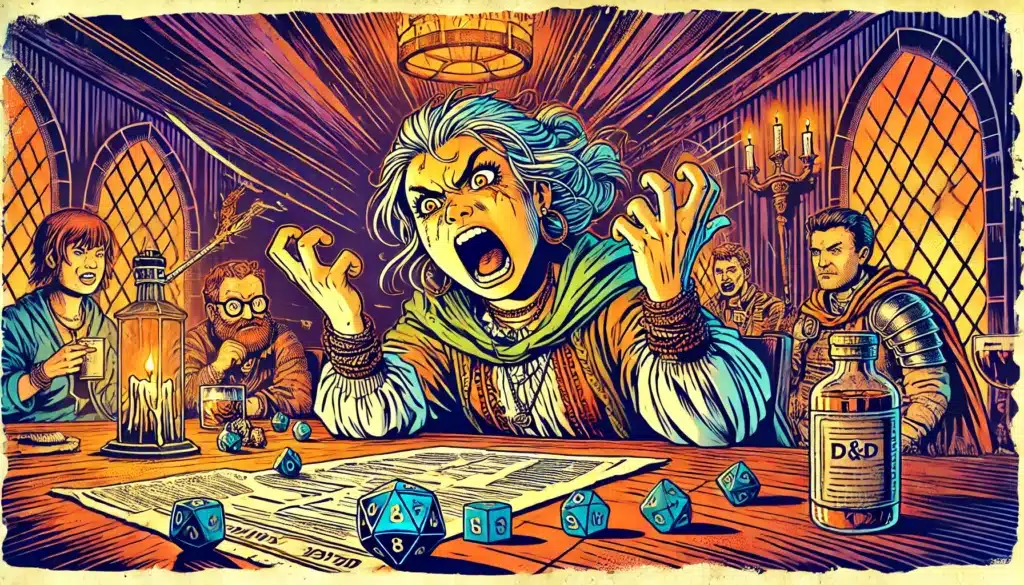
Player Backlash: Tradition vs. Standardization
As discussions rage on forums and social media, it’s clear that the player base is deeply divided about this controversial subclass progression change. A significant portion of the community feels that this modification undermines the very fabric of D&D’s appeal – its rich diversity and complexity. The core of the discontent lies in the notion that this universal change disrupts class identity, an essential element of personalizing one’s role in the game.
You know how it feels when you have crafted a character with a distinct story only to find such integral parts of it delayed? Players argue that waiting until the 3rd level to choose a subclass diminishes the excitement and immediacy of diving into their character’s unique journey. The richness that comes from integrating specific traits early on is, according to them, watered down.
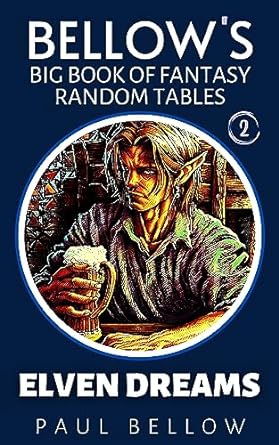
Fantasy RPG AI Generators with ChatGPT+
Make life as a Game Master easier.... If you play Dungeon & Dragons, Pathfinder, or other fantasy tabletop role-playing games, check out my DND character backstory generator and other fine AI RPG tools at LitRPG Adventures Workshop today.
Here’s a breakdown of the critiques pouring in from players:
- Dilution of Class Identity: Unique early choices now postponed.
- Delayed Character Customization: Limits immediate personalization.
- Lost Early Narrative Hooks: Initial storylines now harder to craft.
- Homogenized Experience: Reduces distinctive adventure paths.
- Challenges Role-Playing Authenticity: Forces role immersion to defer.
- Confusion for Veteran Players: Established play styles disrupted.
- Perceived as a ‘Nerf’: Classes lose early unique abilities.
- Disappointment in Delayed Payoff: Lack of early class rewards.
- Disruption in Campaign Planning: GMs must adapt to new frameworks.
- Strained New Player Dynamics: Increased pressure on early cohesion.
- Critique of Over-Simplification: Complexity seen as reduced.
- Lack of Flavor in Early Levels: Initial gameplay seen as bland.
- Imbalanced Player Rewards: Disparity between player investment and character growth.
- Boring Start for Tales: Early sessions feel repetitive.
- Cultural Erosion of D&D Tradition: Concerns about losing D&D’s heart.
And yet, there’s an opposing voice, albeit quieter, that sees potential in this methodical approach. Perhaps, as with all evolutions, it’s simply a case of growing pains. But remember, D&D has always been a game of choices, where freedom feels not just absorbed but lived. Whether this new standardization will find its footing and win hearts remains to be seen.
So, as the community navigates this narrative crossroads, one can’t help but wonder: is this simply an overreaction, or a legitimate crossroads where tradition and modernization collide? Only time and tabletop trials will reveal which spells forge the path forward or crumble into the void of discontent.
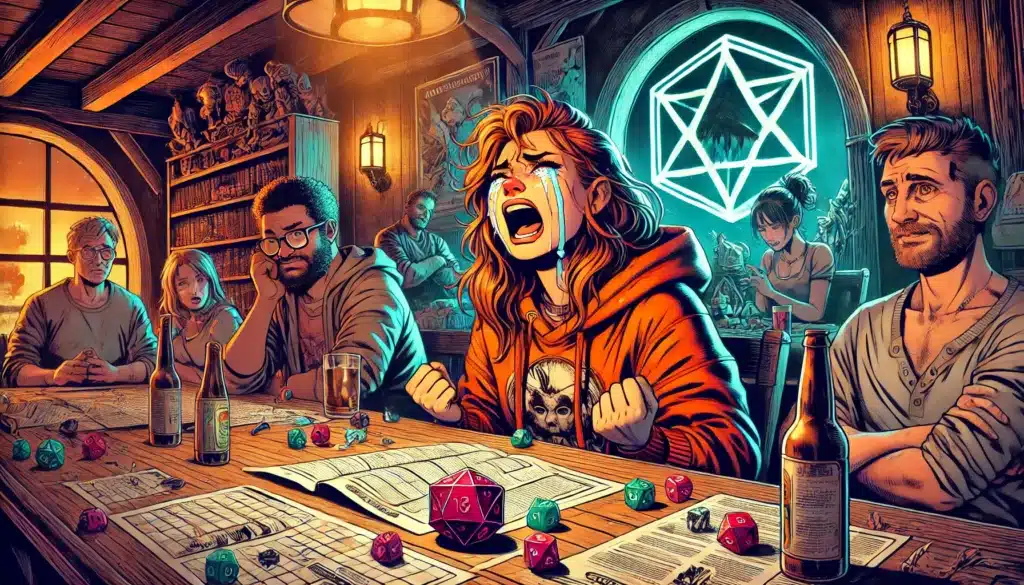
Impact on Legacy Subclasses and Multiclassing
As the D&D community grapples with the implications of this universal 3rd-level subclass progression, a critical question looms: What does this mean for the legacy subclasses from previous editions? For seasoned players who have been crafting their characters across editions, this change doesn’t just represent a new coat of paint but a significant structural overhaul. The ripples are particularly felt in the realm of multiclassing—a practice dear to those who enjoy hybrid character development for its layered complexities and strategies.
These adjustments pose a potential roadblock for those looking to maintain their favorite subclass combinations. The timing shift alters when characters gain pivotal abilities, making it a formidable challenge to balance legacy attributes with the new standardized structure. And here’s the thing: this adjustment isn’t just a minor tweak. It’s akin to rewriting a character’s foundational script.
| Legacy Subclass Level | New Standard Progression | Multiclassing Implications |
|---|---|---|
| 1st Level | 3rd Level | Delayed Access to Special Abilities |
| 2nd Level | 3rd Level | Equalizes Ability Timing |
| 3rd Level | 3rd Level | Easier Planning Across Classes |
| 4th Level | 3rd Level | Balancing Requires Re-Adjustment |
| 5th Level | 3rd Level | Uniform Entry into Subclasses |
| 6th Level | 3rd Level | Altered Feat Timing |
| 7th Level | 3rd Level | Consistent Power Curve |
| 8th Level | 3rd Level | Reconfiguration of Strategies |
| 9th Level | 3rd Level | Delays Classic Combinations |
| 10th Level | 3rd Level | New Synergies Needed |
| 11th Level | 3rd Level | Increased Focus on Base Progression |
| 12th Level | 3rd Level | Necessitates a Change in Progression Approach |
But it’s not all doom and gloom. Some see opportunities for developing new synergy between classes, even if it requires more careful planning and adaptation. For newcomers, this standardization might even offer a cleaner slate, allowing them to navigate the complexities of multiclassing with less initial overwhelm. For others, it’s the bittersweet realization that their carefully concocted spellwork will need reimagining in light of these revisions.
Ultimately, the fallout from this significant change prompts a profound reflection within the community. While some will argue that it’s a much-needed move towards a balanced system, the counterargument stands unresolved: whether simplicity can indeed be synonymous with depth and tradition. For veteran players, it might feel like a betrayal. For new adventurers, perhaps it’s an open invitation to reinvent the magic—and isn’t reinvention at the heart of every great epic?
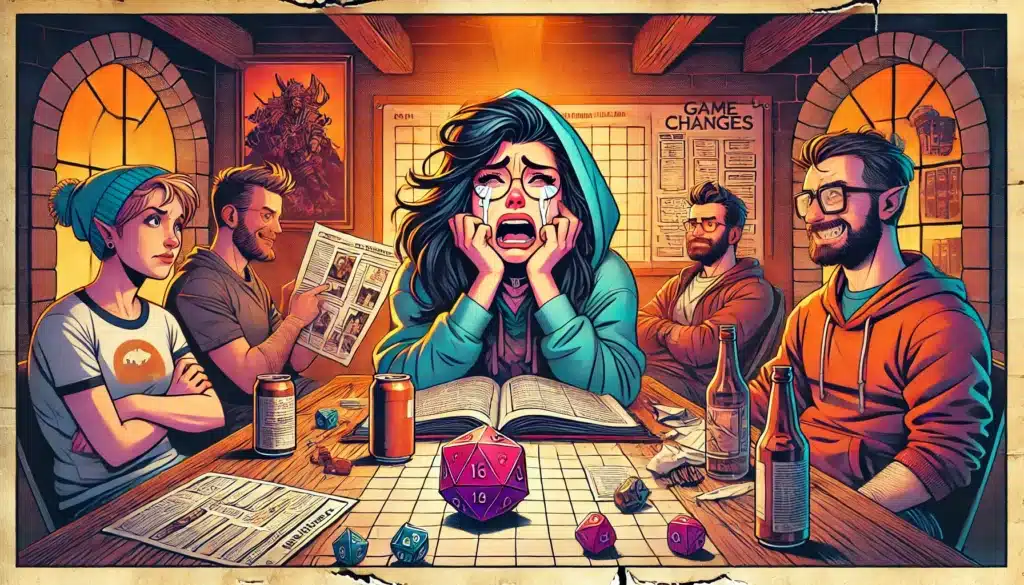
Official Responses and Community Feedback
As the debate over One D&D’s subclass progression change continues, the D&D design team has made efforts to address the community’s concerns with a series of official responses aimed at clarifying their intent and gathering feedback. They’ve acknowledged the heated discussions, emphasizing their commitment to preserving the game’s spirit while steering it toward an inclusive future. But with every response, there comes a slew of new questions and, of course, more feedback.
The design team has highlighted several key talking points aimed at addressing the backlash:
- Commitment to Game Balance: Standardization as a means to equalize power among classes.
- Improved Newcomer Experience: Alleviating the overwhelming nature of early-game decisions.
- Embrace of Community Feedback: Pledging openness to iteration based on player insights.
- Long-term Consistency Goals: Ensuring that future content aligns seamlessly with existing framework.
- Clarifications on Storytelling Potential: Opportunities to deepen narratives before subclass selection.
- Reiteration of Design Intentions: Reducing game entry barriers for players of all backgrounds.
- Emphasis on Playtesting: Assurance that community participation is vital to development.
- Acknowledgement of Legacy Concerns: Recognizing the importance of honoring D&D’s rich history.
- Invitation to Continued Dialogue: Encouraging ongoing communication with the game’s loyal base.
- Encouragement of Bold Character Builds: Turning constraints into novel creativity.
- Transparency in Design Process: Providing insight into decision-making rationale.
- Examples of Successful Implementations: Offering success stories from playtesting groups.
- Focus on Accessibility: Designing with diverse player needs in mind.
- Evaluation of Feedback Trends: Analyzing player preferences to refine mechanics.
- Reassurance of Game’s Evolution: Framing changes as part of an ongoing journey.
- Recognition of Emotional Investment: Understanding player attachment to early choices.
- Prioritization of Fun and Engagement: Ensuring enjoyment remains the foremost goal.
- Efforts to Preserve Creativity: Balancing standardization with ample personalization options.
- Future Innovation Considerations: Planning continued growth with player preferences in view.
- Promise of Supportive Resources: Providing tools to ease transition into new structures.
- Commitment to Tradition and Innovation: Striving for a harmonious blend of both elements.
As the dialogue evolves, the design team assures players that their voices truly matter. They promise to consider adjustments in the coming months and to release further updates reflecting communal input. For now, both sides eagerly await each new development, hoping for resolutions that satisfy both tradition and innovation.
The road ahead, while challenging, underscores the inherent beauty of D&D—its ability to spark conversations and bring a diverse community together. As players and developers continue to engage in this shared storytelling journey, it is this very discussion that will ultimately help shape the game’s future and ensure it remains the beloved pastime it has long been.
One D&D (2024) – the upcoming revision of D&D 5th Edition – underwent significant class design experiments during its public playtests. A major question was whether subclasses would be standardized across all classes. Here’s what we know from official playtest materials, developer comments, and previews:
Unified Subclass Progression: The Initial Plan
Early One D&D playtests attempted to unify the subclass progression for every class. The design team’s initial vision was that all classes would choose their subclass at 3rd level, and subclasses would grant features at the same set of levels thereafter (originally 3rd, 6th, 10th, and 14th level for every class)

Fantasy RPG AI Generators with ChatGPT+
Make life as a Game Master easier.... If you play Dungeon & Dragons, Pathfinder, or other fantasy tabletop role-playing games, check out my DND character backstory generator and other fine AI RPG tools at LitRPG Adventures Workshop today.
dicebreaker.com. This was a big shift from 2014’s 5e, where subclass entry and progression varied by class (e.g. Clerics and Warlocks got subclasses at 1st level in 5e, Wizards at 2nd, most others at 3rd). The goal was to streamline class progression and make the early levels consistent:
- Subclass Entry at Level 3: In One D&D’s playtest, no class gained its subclass at 1st or 2nd level – everyone would pick a specialization at 3rd level. For example, Clerics would no longer choose a Divine Domain at 1st level but instead at 3rd (with new 1st-level class features added to fill the gap) Likewise, Warlocks and Sorcerers, whose magical identity in 5e began at level 1, would now wait until 3rd level to formally gain their Patron or Sorcerous Origin. Even Wizards, who traditionally chose an Arcane Tradition at 2nd level, would push that choice to 3rd in the new systemrpg.stackexchange.com.
- Uniform Subclass Feature Levels: Under this plan, every subclass was structured to grant features at 3rd, 6th, 10th, and 14th level (ensuring four subclass features per class)dicebreaker.com. This would eliminate some of the uneven spacing of subclass features present in 5e. For instance, the Rogue in 5e gains no subclass features between 3rd and 9th level – a long gap that many campaigns never reach beyonddicebreaker.com. The unified progression (features at 3, 6, 10, 14) was meant to “solve the long-gap problem”tribality.com by giving mid-level subclass features to classes like the Rogue. It also opened design space for shared subclasses that multiple classes could take, since all classes would have subclass features at the same levelstribality.com. (This idea of one subclass usable by different classes was floated during the playtests.)
Design Rationale: Developers indicated a few reasons for this standardization. One was to standardize the first few levels across all classes for simplicity – especially helpful for new players learning the game.
It also addressed mechanical issues like multiclass balance: in 5e, dipping one level into a class like Warlock or Cleric can grant a subclass boon immediately at 1st level; moving subclass choice to 3rd level across the board prevents quick “dip” multiclass exploits and makes subclass features something you earn after a commitment to the class. Uniform subclass progression also helps ensure each tier of play (every few levels) gives every class something new and exciting from their subclass, keeping their power growth on more even footing.
Design Insights and Official Comments
Why the change? The One D&D team discovered that fully standardizing subclass progression caused several problems. According to commentary from Dicebreaker, the designers found it created balance issues for some classes and undermined their goal of backward compatibility with 5E material
Many existing subclass options (from the 2014–2023 books) didn’t fit the new 3/6/10/14 template without leaving dead levels or requiring rework. For example, a 5e Rogue subclass expected to grant something at 9th level, not 6th, and a Cleric subclass had features at 1st and 8th that wouldn’t slot neatly into a new scheme. During the playtests, Wizards of the Coast even provided a stopgap rule: if you used an older subclass with a new class that had different feature levels, you were told to “follow the older Subclass’s level progression after the Class lets you gain the Subclass”
In practice this was clunky, and it signaled that a strict universal progression might not be worth the hassle.
Additionally, feedback indicated some narrative dissonance with certain subclasses being delayed. Players felt classes like Cleric, Warlock, and Sorcerer are defined by their divine patron, pact, or innate magic from the very start (story-wise), and waiting until 3rd level to choose that felt odd to some
The designers tried to square this narratively (“your subclass power was there all along, it just mechanically manifests at 3rd level”) and by giving level-1 features that hint at the subclass, but it remained a point of discussion among fans.
Meanwhile, classes like Rogues and Fighters had the opposite issue: they welcomed getting more subclass features earlier (to avoid late-level dead zones), and reverting those back to the 2014 spacing disappointed some who liked the playtest’s smoother progression
One playtester commentator noted that the final approach might be the “worst of both” – introducing the delay for narrative-heavy subclasses and keeping long gaps for others – but it was the result of negative feedback and the priority of compatibility.
Developer statements suggest that WotC made this compromise after weighing player feedback. Jeremy Crawford (lead rules designer) and others repeatedly stressed that the 2024 revision would remain backward-compatible with existing 5e content. By rolling back to the familiar subclass progression, they ensure that a 2014 subclass can be used in the 2024 rules with minimal adjustments, and vice versa
In the Unearthed Arcana 6 playtest notes, it was explicitly mentioned that the subclass progression was returned to “its 2014 version” to address these concerns
The Dicebreaker article confirms that the team “toyed with” the fully standardized model but ultimately decided against it due to balance and compatibility issues
In short, the design philosophy shifted to meeting 5E in the middle: making broad improvements to classes without invalidating the vast library of subclasses players already enjoy.
Key Changes from 2014 to 2024
To summarize the official design changes around subclasses in the 2024 Player’s Handbook:
- Subclass Choice at 3rd Level for All Classes: This is a universal change in One D&D. No matter what class you play, you won’t pick a subclass (archetype, domain, path, etc.) until you hit level 3. This standardizes the early character experience. Classes that previously front-loaded subclass at level 1 or 2 have new core class features at those levels to compensate (e.g. Cleric’s Divine Order at 1st level instead of a Domain, Warlock getting Invocations at 1st level, etc.). For new players, this means the first two levels focus on the base class’s identity before branching out, and it gives them a little time to learn the game before making a big subclass choice.
- Subclass Progression Partially Standardized: The intended uniform progression (features at 3, 6, 10, 14 for all) was not fully adopted in the final design. Instead, each class has a fixed progression of subclass features that largely mirrors its 2014 counterpart after 3rd leveltribality.com. Many classes still have four subclass features in total (just like in 5e), but the levels at which those come can differ by class:
- Classes like Barbarian and Warlock (which in 5e had 3, 6, 10, 14) naturally fit the 3/6/10/14 model and remain on that track.
- Classes like Rogue (3, 9, 13, 17 in 5e) retain those unique milestone levels, meaning they still have a longer gap before their 2nd subclass feature.
- Fighters (Martial Archetype at 3, then 7, 10, 15, and a 5e subclass capstone at 18 for Champion) still get features at 3, 7, 10, 15 (Champion’s 18th-level “Survivor” feature may have been moved or become a class feature since 20th level design changed – the Epic Boon system replaces many capstones).
- Paladins (Oath at 3, Aura improvements at 7 and 15, and an Oath capstone spell/feature at 20 in 5e) now choose Oaths at 3 as usual; their subclass features at 7 and 15 likely remain, but the 20th-level unique power has been reworked. In One D&D playtests, all classes instead gained an Epic Boon feat at the top level and many class capstones moved to 18th level, so Paladin’s oath capstone might be integrated differently (possibly as an 18th-level class feature). In any case, Paladin subclass progression wasn’t made to fit a 14th-level endpoint like the earlier unified scheme would have required.
- Clerics and Sorcerers have lost their 1st-level subclass features and gained alternate class features at low levels. They then get subclass features at 3rd and later levels (Cleric Domains giving features at 3, 6, 14, etc., Sorcerer Origins at 3, 6, 14, 18, etc.). These are big adjustments in when powers arrive, but the overall power and count of features remains equivalent to 2014 by high level.
- Class Feature vs Subclass Feature Adjustments: In some cases, what used to be a subclass-granted ability in 5e has been moved into the base class for 2024, or vice versa, to accommodate the new progression. For example, Clerics at 7th level get a class feature (Blessed Strikes) that lets them choose to add damage to weapon attacks or cantrips – this replaces the old Divine Strike or Potent Spellcasting that subclasses used to grant at 8th level in 5e. By making it a base class feature, they ensured every Cleric still gets that benefit at the right level without needing the subclass to provide it. Similarly, 5e Warlock’s unique “Pact Boon” at 3rd level (Blade/Chain/Tome) was removed as a separate feature in One D&D; instead, those pact benefits are now accessible through the expanded Eldritch Invocations system available to all Warlocks. This streamlining means a Warlock’s subclass (Patron) is fully focused on patron-themed powers, while the general “pact” abilities are folded into the core class progression. These changes show how WotC reorganized class design so that delaying subclass choice doesn’t strip a class of defining abilities – the core class picks up the slack in those early levels.
- High-Level Changes (Capstones and Epic Boons): While not strictly about subclass progression, it’s worth noting the 2024 update tweaks the endgame levels which in turn affected subclass design. In earlier playtests, level 20 was going to grant an Epic Boon feat to every class, replacing unique capstones. By the final iterations, they adjusted this: many classes had their old level-20 capstone moved down to 18th level, and then something new at 20th (sometimes an Epic Boon or an improved class feature). This indirectly impacted subclasses – e.g. a subclass that previously gave a feature at level 20 (like some Paladin Oaths) might have that feature removed or transformed, since level 20 is now treated differently. The Dicebreaker preview suggests the designers aimed to keep the 2024 rules backward-compatible with 5e “sourcebooks”, so they avoided radically changing subclass progression into the level 15–20 range. Essentially, subclasses in the 2024 PHB stop giving features by the same general tier as before, and epic boons or new class capstones fill the final gap.
Final Thoughts on the Subclass Progression Controversy
When we step back to assess the magnitude of this subclass progression controversy, what truly emerges is not just a debate over game mechanics but a dialogue about the soul of Dungeons & Dragons itself. It’s a vibrant clash between the nostalgia for familiar dynamics and the allure of fresh, unified systems. This ever-bubbling cauldron of ideas and opinions is where the heart of D&D beats strongest, fueled by tradition yet eager for evolution.
Try my AI Tabletop RPG generators...and an extensive library of content!
As we reflect on these broader implications, it’s clear that the decisions made today will ripple through the D&D landscape for years to come. And therein lies the crux: balancing the cherished essence of what makes the game so captivating with the need to adapt to the growing and ever-diverse player base. The game’s longevity depends on it finding that sweet spot between honoring its rich past and embracing innovative pathways.
In many ways, this progression change serves as a reminder of the importance of player feedback in shaping the game. The D&D community isn’t just an audience—it’s an integral part of D&D’s living legacy. What happens to the characters, settings, and indeed the rules, emerges from a collaborative effort that spans paper, dice, and screens shared across the globe.
So as this discussion continues, let’s not forget to honor the spirit of creativity and collaboration that has always defined D&D. Whether this change will ultimately enhance the game or if we’ll see an eventual return to its prior state remains uncertain, but the dialogue it’s sparked is essential. It’s precisely this synthesis of tradition and innovation, of player voices and designer visions, that will guide D&D as it embarks on this next chapter of its storied adventure.
As the dust settles—or perhaps stirs anew with each official update—it’s clear that what truly matters isn’t just the rules but the myriad stories, friendships, and connections that D&D helps foster. In this evolving narrative, every player has a part to play, and every voice can make a difference. Here’s to the myriad possibilities that lie beyond the dice roll, where the real magic truly happens. Players weave their unique tales, drawing from their imaginations to create worlds rich with adventure and wonder. As they navigate challenges and triumphs, they encounter not only the thrill of timeless D&D trap mechanics but also the shared laughter and camaraderie that make each session unforgettable. In this collective journey, every game becomes a new chapter, reminding us that the heart of Dungeons & Dragons lies in the bonds forged and the stories crafted together.

Fantasy RPG AI Generators with ChatGPT+
Make life as a Game Master easier.... If you play Dungeon & Dragons, Pathfinder, or other fantasy tabletop role-playing games, check out my DND character backstory generator and other fine AI RPG tools at LitRPG Adventures Workshop today.

